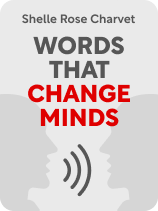

This article is an excerpt from the Shortform book guide to "Words That Change Minds" by Shelle Rose Charvet. Shortform has the world's best summaries and analyses of books you should be reading.
Like this article? Sign up for a free trial here.
Do you tend to see the forest or the trees? What if people around you see things differently than you do?
Each individual makes sense of the world in a unique way. One area in which people usually fall into one category more than another is the way they view things—either in broad strokes or in fine detail. In turn, this informs the way they operate. Shelle Rose Charvet explains how to communicate with both types.
Read more to understand big-picture vs. detail-oriented people and speak their language.
Big-Picture vs. Detail-Oriented
Some people are more insightful when they’re looking at the big picture than they are when they’re looking at individual situations. (Charvet uses the term “Scope” to refer to big-picture vs. detail-oriented wiring.)
Big-picture people tend to speak in abstract, sometimes vague terms, writes Charvet. They might say, “We decided to move Brian to the sales team.” In contrast, detail-oriented people tend to describe concrete situations, sometimes in painstaking detail: “Last Friday, Trudy, Mark, and I met in Conference Room B and decided that Brian would be a better fit on the sales team because of how much he’s improved his people skills.”
Make sure to talk in terms of the big picture with people who have that wiring; otherwise, they’ll either get bored or feel overwhelmed. Likewise, speak in comprehensive, concrete terms with detail-oriented people, or they’ll become frustrated with your vague language.
| Ideal Communication Is Both Big-Picture and Detail-Oriented Some experts contend that the most effective communication conveys a single “big idea,” yet has enough memorable concrete details to be easy to understand and retain. Arguably, this kind of communication is effective because it appeals to both big-picture and detail-oriented listeners: The big idea is broad and important enough to capture the attention of big-picture people, while the concrete details help detail-oriented people follow and readily recall the message. In How Highly Effective People Speak, Peter D. Andrei explains how to communicate in this way: Narrow down your big idea to its simplest form and leave out any details that aren’t necessary for understanding your thesis. This simplification risks alienating your detail-oriented listeners, so add rich sensory imagery that makes your ideas easier to remember and understand without making them any more complicated. For instance, if you’re pitching a new tech product, you could emphasize its elegant concept by detailing how sleek and modern you imagine its hardware and packaging will look. Weaving your ideas into a story or anecdote is another way to make your ideas rich in detail without obscuring the big picture—for example, you could describe the first reaction someone may have when unboxing your new product. |

———End of Preview———
Like what you just read? Read the rest of the world's best book summary and analysis of Shelle Rose Charvet's "Words That Change Minds" at Shortform.
Here's what you'll find in our full Words That Change Minds summary:
- Why it's sometimes hard to understand what others are trying to say
- The 14 kinds of mental habits that explain how people think
- How to understand others better and build positive relationships






